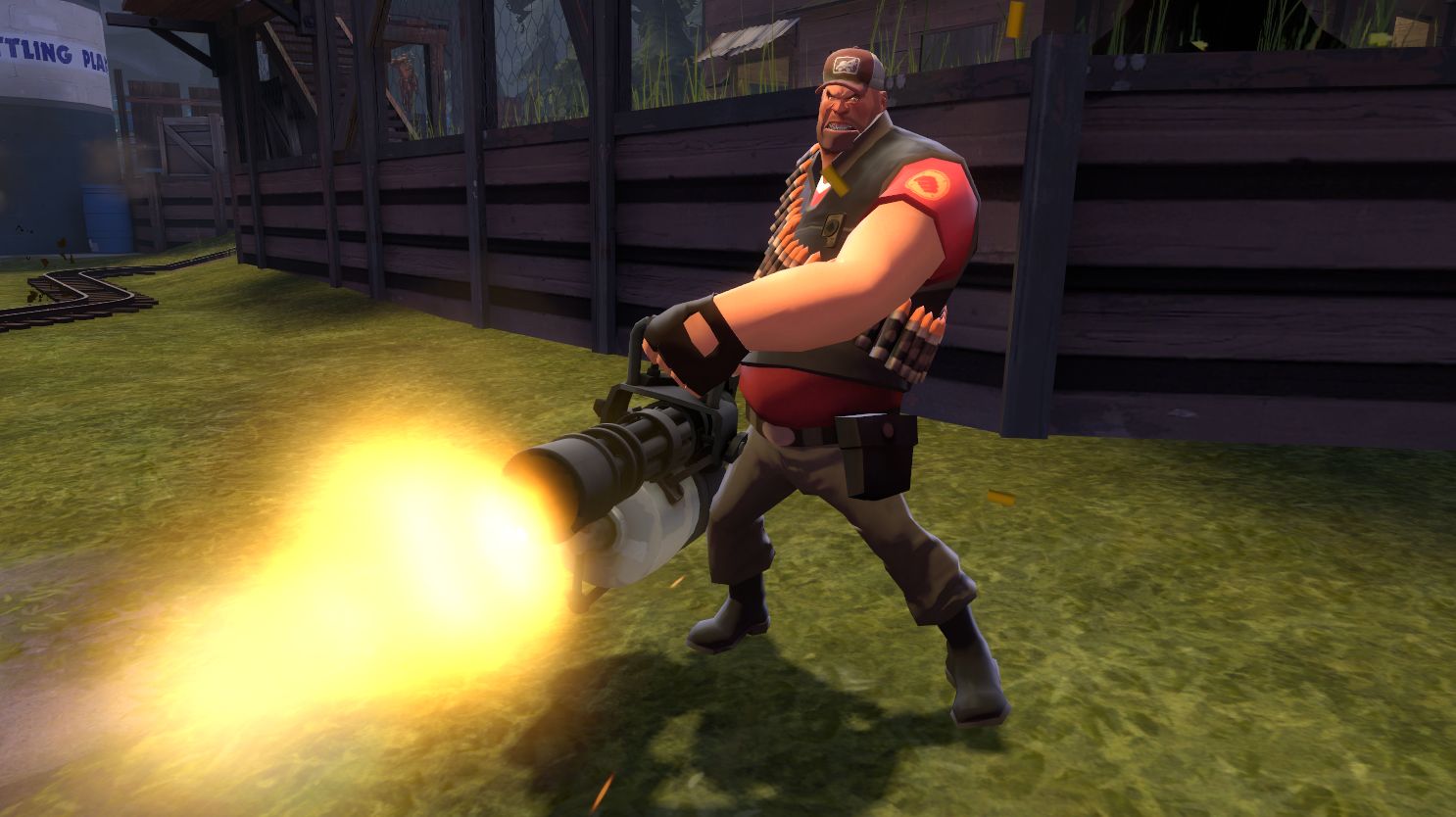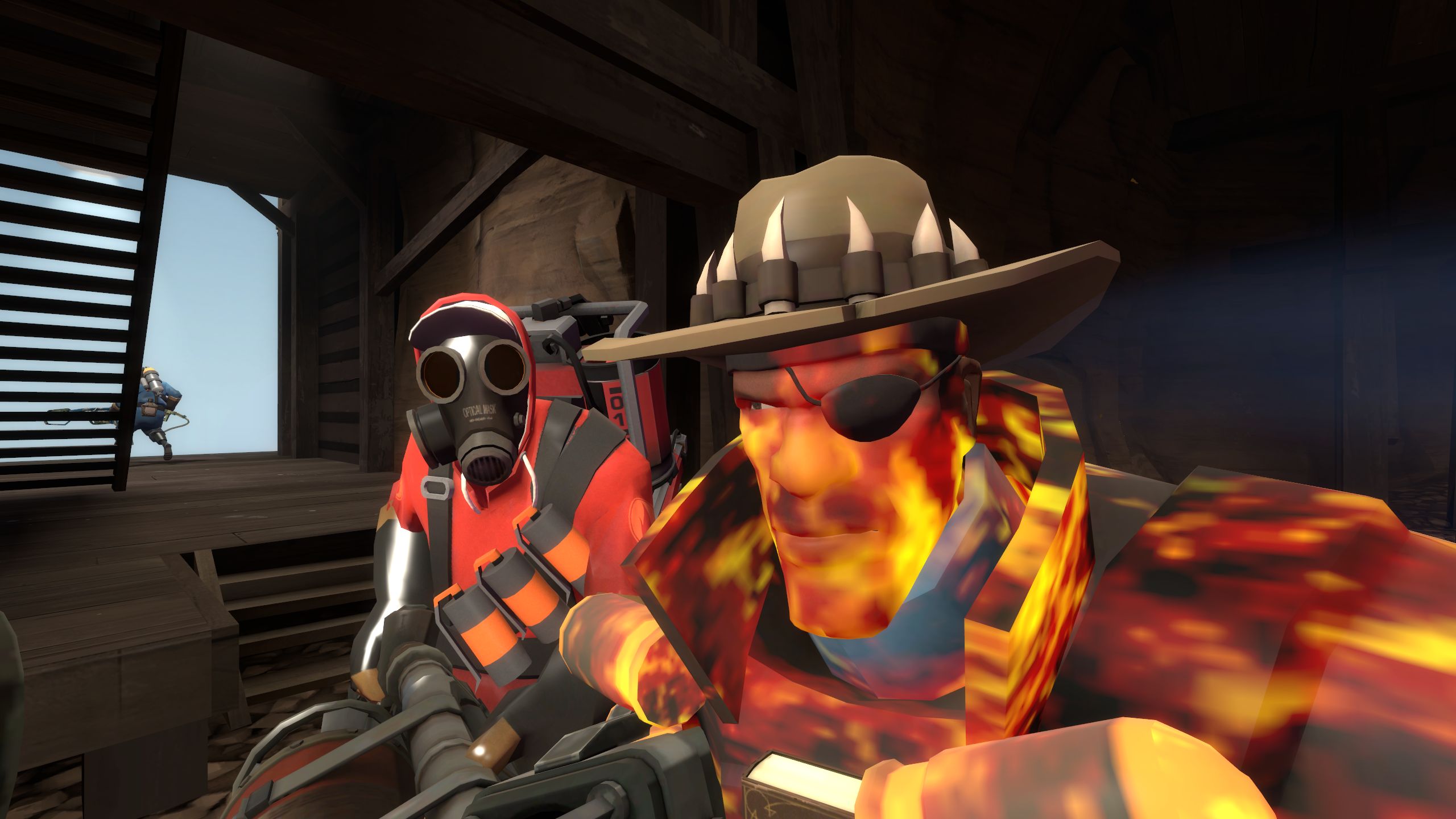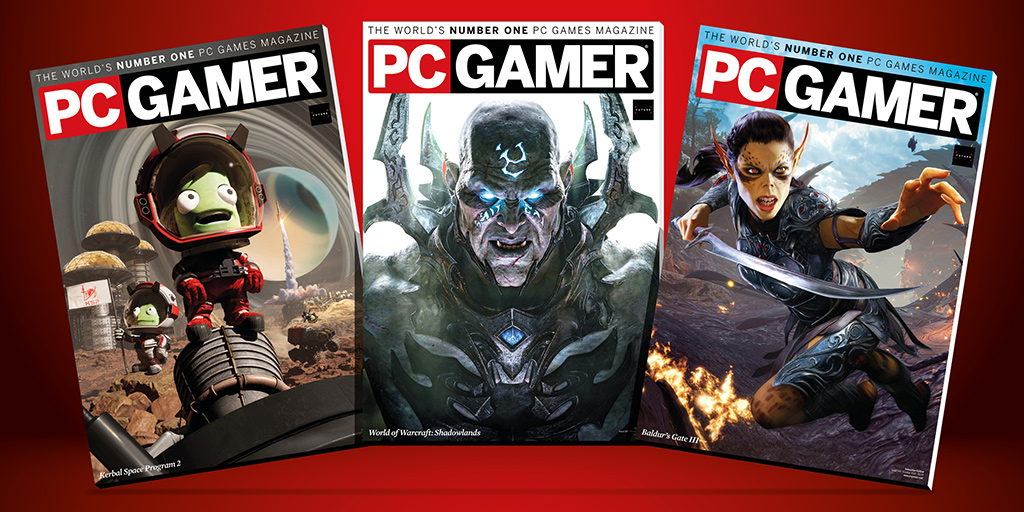Revisiting Team Fortress 2, the most influential multiplayer shooter of the 21st century so far
The more things change...

The received wisdom is that Team Fortress 2 has changed, and not for the better. The argument, often made by former players, is that everything Valve has added to the game over the last 13 years—the hats, the achievements, the jars of human piss—has diluted the spirit of what TF2 once was. I've fallen into the same trap myself over the years, bemoaning that the game I once loved no longer exists.
It would be absurd to suggest that Team Fortress 2 hasn't changed; it was arguably the poster child for games-as-a-service design. It's evident in everything from the menus to the way you start a match. Nevertheless, returning after years away, I'm struck by how much of the core appeal remains. There is more now: more maps, more weapons, more customisation options, more effects. Sometimes there are lasers. Sometimes you'll be drenched in milk. In a handful of crucial ways, though, this is still the TF2 that became the most influential online shooter of the 21st century so far.
Load into a match and you'll still get teammates in your home spawn accusing every player of being a Spy. You'll still get intractable 2Fort stalemates, as players abandon the objective in favour of an endless deathmatch. You'll still get sniper wars and W+M1 Pyros. Most importantly, you'll still get the clarity of purpose and personality of its nine classes, who retain their role and at-a-glance design, even as their arsenals and accoutrements have grown over so many updates.

The classes are the heart of what made TF2 such an enduring phenomenon, and in retrospect laid the path for the character-led template of the subsequent hero shooter craze. If a medic in Battlefield 2 was more uniform than man, the Medic in Team Fortress 2 was an actual person. We 'met' him, and the other mercenaries, through a series of vignettes released over a period of years—each one increasingly elaborate until Team Fortress 2 was a full universe of relationships and conflict; antagonistic administrators and boisterous, technologically advanced Australians.
Overwatch and its ilk would go further, drawing on League of Legends and Dota 2 to make actual characters with names and abilities to go along with their distinct weapon sets. But Team Fortress 2's proto-style has merit. To modern eyes, this undefined melding of class and character feels more awkward, yes, but also more playful. It lampshades the inherent absurdity of the same characters fighting an endless conflict—largely defined by being dressed in either red or blue clothes—and thus invites you to revel in it too. It's impossible to take the conceit seriously, creating a charmingly slapstick battlespace, despite all the blood and gibs.
A full universe of relationships and conflict; antagonistic administrators and boisterous, technologically advanced Australians.
It's refreshing—after years of seeing characters like Overwatch's Reaper and Apex Legends' Revenant—to be playing a game that so fully rejects being dark or edgy. But more than a tonal triumph, I'm taken by how unexpectedly restrained Team Fortress 2's class design feels. Where once nine distinct playstyles felt like a lot, now it's at the low end of a videogame roster list. And while each has been broadened over the years, even the wildest of weapon loadouts won't change the basic role each class was made to fill. The Pyro still burns things. The Sniper still does long range, precision damage. The Scout is still a prick.

Arguably Valve's boldest design decision—one that's remained steadfast throughout TF2's lifespan—was not to include an assault rifle. It's too blandly effective for a game built around player limitation. The Heavy's minigun might be able to cut down swathes of enemies, but it comes with inherent compromise: slow movement, a long spin-up time, a large, dominating hitbox. Each class comes with a similar in-built weakness, usually in the form of another class that acts as a hard counter, in a way that—in my experience of pub games, at least—creates more of an unspoken sense of team cohesion than in other games of its type.
Keep up to date with the most important stories and the best deals, as picked by the PC Gamer team.
A problem that Overwatch has never elegantly solved is incentivising players to switch heroes based on the team they're facing. For starters, the loss of your ultimate ability's charge means there's a cost for making a change. More deeply, though, it's harder to master a large roster's range of quirks and abilities and counters, meaning players trend towards picking a single 'main', or at least a handful of characters that they feel most comfortable with.
Team Fortress 2 doesn't have this, at least to the same extent. I use Scout more than any other class, but have no qualms about switching if I'm staring down the barrel of a sentry nest. It feels like an essential part of play. You encounter problems that your current team composition can't handle, and make changes as needed.

That's the ideal, at least. Sometimes, you are going to be matchmade onto a team with six Spies. Some people are just beyond help, no matter what game you play.
This is where Team Fortress 2's template can break down. Its round times are longer than most hero-shooters, which, if both teams are properly rebalancing around each other, can make for thrilling last-minute plays that change the course of the match. But if that cohesion doesn't exist, then you're likely in for a bad time.
Outside of play, the game can at times feel like a 13-year-long brainstorming session.
You can experience this for yourself. Just queue up for a round of 2Fort and it will happen sooner rather than later. And when it does… it's fine. Yes, Team Fortress 2 has matchmaking now, but its heart is still the server browser—a rare and beautiful thing for a game with a still-active playerbase. Matchmaking is a performance, where you queue up and get one shot to impress the people that you're grouped with. More than that, the individual tracking and reward structures that were built to incentivise repeat play—K/D ratios, win rate percentage, XP and levels—give a heightened meaning to both individual and team performance. While there are benefits to this, it can be exhausting. You're encouraged to always be 'on'; to perform at your best and never mess up.

Team Fortress 2 also has levels and XP now, but how players perceive a game's purpose is a harder thing to shift. The existence of the server browser invites players to take individual matches less seriously, because servers are a hangout rather than an individually portioned measure of skill. Each server has its own personality—it's a place you visit for a specific type of game, even if that game is loaded with so many custom rules, maps and modes that it barely resembles TF2 in any of its many forms.
Valve used TF2 as a testing board for what games-as-a-service should be—the hats, the crates, the marketplace, the crafting. Outside of play, the game can at times feel like a 13-year-long brainstorming session, filled with different ideas—some written over each other, others hastily wiped off leaving just the faintest trace of what remained. This is what makes Team Fortress 2 such a fascinating game to reinstall. It's simultaneously old and new and experimental and nostalgic. Its magic is weirdly ephemeral, existing as a morass of elements from throughout its long history, and combined with a community that isn't afraid to express itself.
This is why anyone arguing that it should have been preserved in amber—locked to a single moment of time—is missing the point. Even if you could load up the version of the game that existed in 2008, you couldn't recreate the specific servers and memes and, more generally, the ecosystem of PC gaming and multiplayer shooters of the time. Team Fortress 2 has changed. But so have you.

Phil has been writing for PC Gamer for nearly a decade, starting out as a freelance writer covering everything from free games to MMOs. He eventually joined full-time as a news writer, before moving to the magazine to review immersive sims, RPGs and Hitman games. Now he leads PC Gamer's UK team, but still sometimes finds the time to write about his ongoing obsessions with Destiny 2, GTA Online and Apex Legends. When he's not levelling up battle passes, he's checking out the latest tactics game or dipping back into Guild Wars 2. He's largely responsible for the whole Tub Geralt thing, but still isn't sorry.


